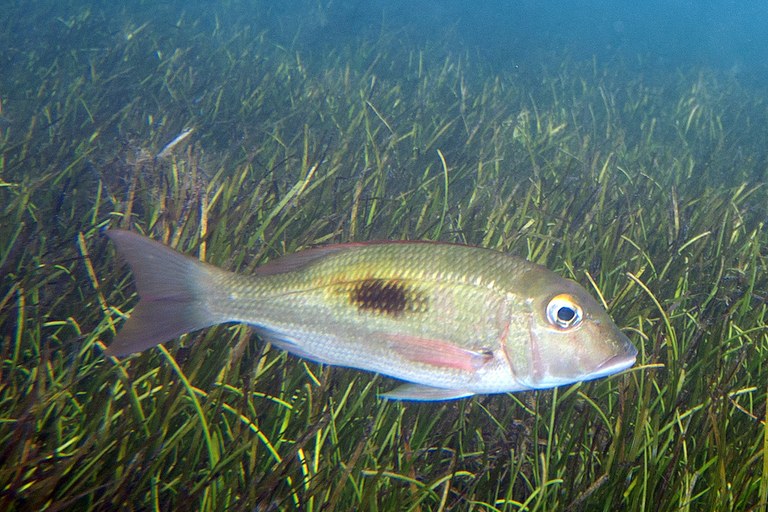
Seagrass Halodule uninervis at Wakaya, Fiji, with a blackspot emperor. Photo by Paul Asman and Jill Lenoble / Flickr.
Recently we’ve read about how macroalgaes can choke out area reefs due to toxins, overgrowth, and other variables. Research recently published by Kenneth Anthony in the journal Global Change Biology details how macroalgaes, seagrasses, and other photosynthetic areas can actually help reefs and minimize the effects of ocean acidification.
In general, ocean acidification causes decreased calcification rates and makes coral brittle over time. However, depending on adjacent communities, ocean acidification may be mitigated to a certain extent if a coral reef is situated near high photosynthetic areas like seagrass beds or lagoonal areas dominated by macroalgae. In these areas dissolved carbon dioxide is naturally utilized by plant life via photosynthesis thereby minimizing, or at least slowing down, problems.
Dr Anthony stated:
“It will help us buy some time, and will help us at a local level (to see which reefs) will be the real casualties, but (we) can only do it for so long,”
“If CO2 gets so high and cyclones get more severe . . . corals won’t grow and we can do as much as we want on the ground (but) it’s not going to save the reef.
“We need to fix the global carbon problem to secure the future for coral reefs globally.”
(via The Australian)








0 Comments